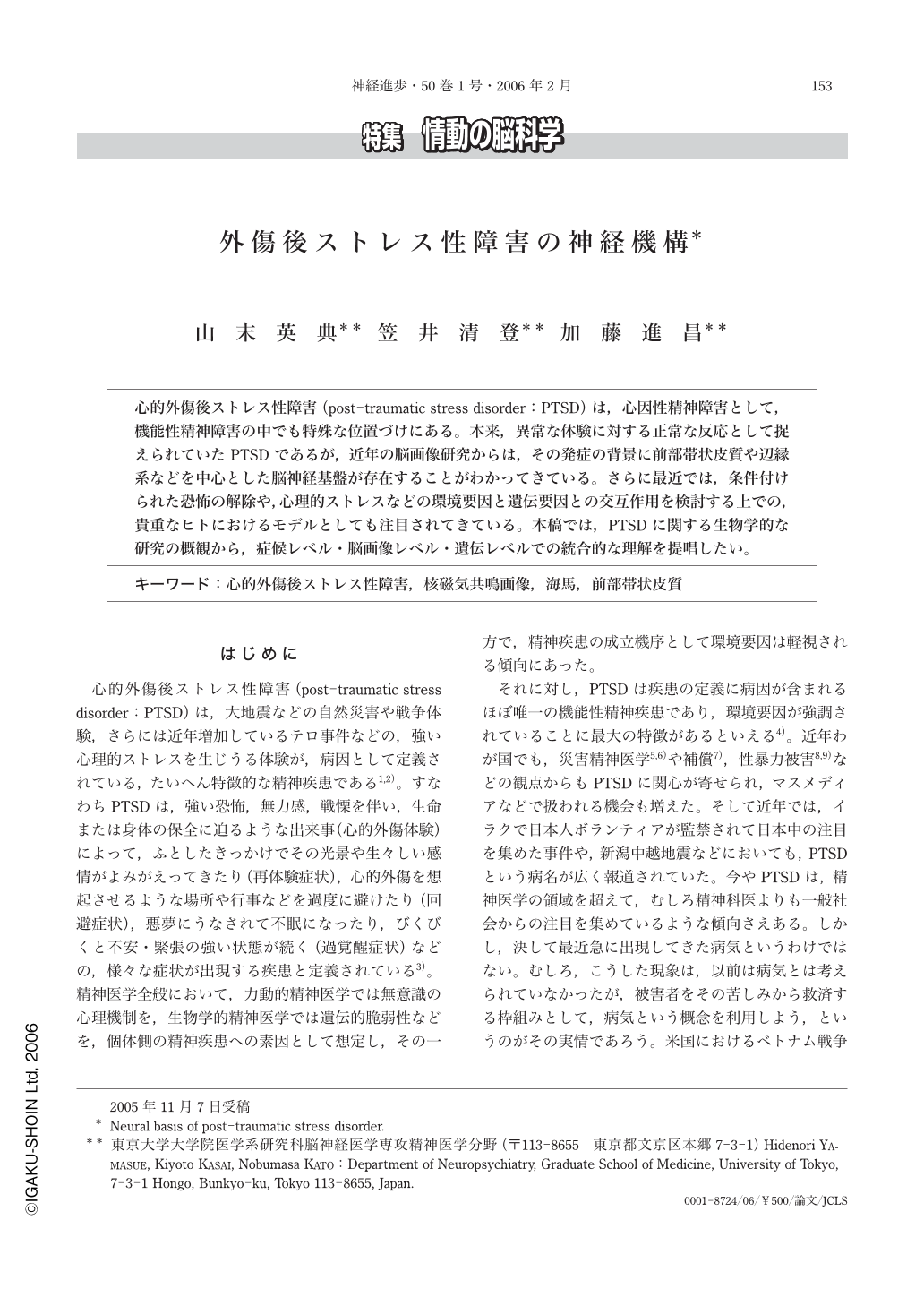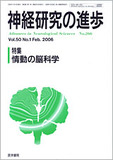Japanese
English
- 有料閲覧
- Abstract 文献概要
- 1ページ目 Look Inside
- 参考文献 Reference
心的外傷後ストレス性障害(post-traumatic stress disorder:PTSD)は,心因性精神障害として,機能性精神障害の中でも特殊な位置づけにある。本来,異常な体験に対する正常な反応として捉えられていたPTSDであるが,近年の脳画像研究からは,その発症の背景に前部帯状皮質や辺縁系などを中心とした脳神経基盤が存在することがわかってきている。さらに最近では,条件付けられた恐怖の解除や,心理的ストレスなどの環境要因と遺伝要因との交互作用を検討する上での,貴重なヒトにおけるモデルとしても注目されてきている。本稿では,PTSDに関する生物学的な研究の概観から,症候レベル・脳画像レベル・遺伝レベルでの統合的な理解を提唱したい。
Post-traumatic stress disorder(PTSD)is unique in being characterized as a psychogenic psychiatric disorder caused by psychological trauma. Of note, findings from recent neuroimaging studies of patients with PTSD suggest pre-existing brain pathology plays an important role even in the onset of psychogenic disorder. In particular a number of studies have suggested an important role of the anterior cingulate cortex, a structure involved in attention, emotional regulation and conditioned fear, as well as the other limbic structures and their interconnections in the pathophysiology of PTSD. Recently, much attention has been paid to PTSD as a human model of both failure of extinction of conditioned fear and of interactions between genetic and environmental factors. This review article firstly reviewed recent structural and functional neuroimaging studies of PTSD and then proposed an integrative model that may account for the pathophysiology of PTSD at clinical, brain functional, and genetic level.

Copyright © 2006, Igaku-Shoin Ltd. All rights reserved.


